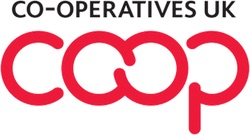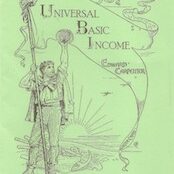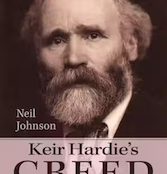What some are now referring to as a US ‘empire’ is a complex and dynamic creation, says WILLIAM BROWN.
Every great international conflict in the modern world – from the Napoleonic wars through the first and second world wars – has been followed by a recasting of the international order. Yet, although George Bush senior proclaimed a new world order on the eve of the previous war against Iraq, it is only after the latest conflict that we are seeing, clearly, the contours of the international order bequeathed by the end of the Cold War.
At the centre of this new world sits the United States of America as the sole superpower. So what are we to make of US power and purposes in the world today?
The first thing is not, in fact, very new. That is, that the two-fold objectives which have guided US policy towards the rest of the world for most of the past 100 years, remain. These are, first, to secure the interests of the liberal capitalist world against challenges to it; and, secondly, to maintain the US’s leadership position within the capitalist world.
For much of the post-second world war era, these two dimensions of US policy were bent to one over-riding aim: containing and eventually defeating communism. Indeed, the confrontation with communism goes back even further than this, to the Bolshevik revolution itself. Then, western involvement in the post-revolutionary civil war, and US plans for post-World War One reconstruction in Europe (based on the creation of new, independent capitalist democracies in Europe within the framework of the League of Nations), were explicitly directed at containing the new communist state.
What turned into a global confrontation with communism lent an overarching shape to US policy towards all areas of the world. Strong, unique alliances, were built with the capitalist states of Europe, and with the reconstructed capitalism of post-war Germany and Japan, all in the shadow of America’s nuclear umbrella. Communist-influenced insurgencies in many parts of the rest of the world were confronted, often in a most violent way. And liberal democratic norms were set on one side as the US supported some of the most brutal anti-communist dictatorships in the newly independent states of the developing world.
With the collapse of communism, however, this apparent uniformity of policy has begun to be replaced by rather different approaches to different parts of the world, even while the over-riding twin objectives, identified above, remain. In an interesting piece of analysis, my colleague, Simon Bromley, has argued both that the nature of American influence and power has changed since the end of the Cold War, and that the policies it pursues towards different regions of the world is now more variable.
Uniquely dominant
The post-Cold War period provides a radically changed context for US power. On the military front, the US is in a uniquely dominant position, now unchecked by the power of the Soviet Union and its socialist allies in Europe and the developing world. However, on the economic front, the relative dominance that the United States enjoyed in the immediate aftermath of the second world war has been vastly diminished, not least because of the success of its own policies which were aimed at revitalising capitalist economies in Europe and Japan.
Bromley claims that this situation – of military unipolarity and economic multi-polarity – combines with a series of regional strategic challenges to configure a varying set of policies that the US is pursuing towards different groups of states in the world.
The first is the ongoing relationship among the liberal capitalist powers. Here, the institutionalised co-operation established in the aftermath of the second world war, and during the Cold War, is set to remain. In the economic field, the US has no option but to continue with co-operative relations with the other leading capitalist states. This has been based on achieving freer movement of trade and capital between these countries and has produced massive mutual gains for the states concerned. In particular, the capitalist states gain from the increased level of accumulation on an international scale, but the alliance they have forged under American leadership helps to strengthen the liberal states domestically. In the military field, paradoxically, the imbalance in military capabilities between Europe and America means that any radical overhaul of NATO is unlikely, whatever the French may say they want.
The spats over policy towards Iraq, in the absence of a more fundamental shift in power among the states of this liberal capitalist core, are unlikely to rupture the economic and military pillars of the liberal capitalist order.
However, outside this core, things are less stable. The second group of relationships Bromley identifies are with the non-liberal emerging powers, particularly Russia and China. Both of these countries have economic reasons for developing further the avenues of co-operation which each is establishing. Russia needs the ongoing support of the west, and further integration into the international economy to bolster its crisis-ridden transition to capitalism. China’s vibrant capitalist growth also means it pursues greater international openness, as witnessed by its accession to the World Trade Organisation. However, each has its own military and security ambitions, particularly in Asia, and each has reasons to fear the power of the other, as well as the US.
Thus, US policy is likely to focus on building, where possible, greater economic co-operation. In particular, this is likely to lead to efforts to further expand the membership of the liberal regulatory order, in particular the WTO. However, militarily, the US may continue to act as an external force maintaining the military balance among the powerful states of Asia (Japan comes into the picture here, too). This is a more precarious set of relationships as both of these states are big enough to cause problems for the US, at least within the Asian region, and neither is really liberal, so clashes may occur over the terms of their integration into the wider international system. Other states, such as India, Pakistan and, in Latin America, Brazil, may pose their own challenges in the future.
Finally, the US is confronted with the challenges of combating threats to the liberal capitalist world from without. As we all know, this is focused on the sometimes linked threats of rogue states and terrorism, both sometimes coupled to the possession of weapons of mass destruction. Here the wars in Afghanistan and Iraq have demonstrated that the US is prepared to become involved in state-building in an effort to undercut sources of potential threat, whether they take the form of bases for terrorist groups, as in Afghanistan, or states which are avowedly aggressive towards US interests, as in Iraq. In addition, the war in Iraq has also shown that the US adheres to a doctrine of pre-emption (that is, attacking a potential future threat before it has had a chance to attack the US).
While this latter challenge holds out the prospect of some great strategic gains for the US (a stable, friendly, and politically not distasteful state in the Middle East, which shares some common interests), it is also the most immediately problematic, as none of the western states have so far shown that they are up to the job of creating new, stable, much less democratic or liberal, states where non existed before.
What some are now referring to as the US ‘empire’ is thus a complex and dynamic creation. The core of this world remains an historically unique international order based on the joint interests of liberal capitalist states. But the relationships between this liberal core and the rest of the world are likely to be the source of many, potentially very dangerous conflicts in the future.
William Brown is a lecturer at the Open University.
• Simon Bromley’s analysis comes from his chapter ‘American Power and the future of international order’, in Ordering the International, a new textbook produced by the Open University (edited by Simon Bromley and William Brown), and published in association with Pluto Press early next year. A longer version of Simon’s chapter will also appear in the journal Historical Materialism in the near future.



20 October 2010
[…] success Matthew Brown reports on how one London borough has helped to improve community relations The power and purposes of the United States William Brown explores the complex and dynamic creation which some are now referring to as a US […]